Our planet is mind-bogglingly diverse. Different environmental conditions give rise to different characteristics in weird animals of all shapes and sizes. Some evolve for the dark, gloomy depths of the oceans, while others eke out an existence in dry, seemingly inhospitable deserts.
Others look seemingly 'normal', until something triggers their weirdness to come out (a bit like humans?).
Many of nature’s weirdest creations hail from the ocean, where complete darkness, sediment-rich waters, high-pressure environments, and near-freezing waters have each led to unique adaptations and some of the most bizarre-looking creatures. Scientists estimate there are anywhere between a few hundred thousand, to over ten million new species waiting to be discovered in the depths of our oceans.
But there are plenty of oddities on land, too. Here are some of the weirdest animals on the planet!
Discover more weird animals:
- Everything you wanted to know about the giant squid
- In photos: How glow-in-the-dark animals use the language of light
- What is an axolotl? Everything you need to know about this charismatic amphibian
Siphonophore
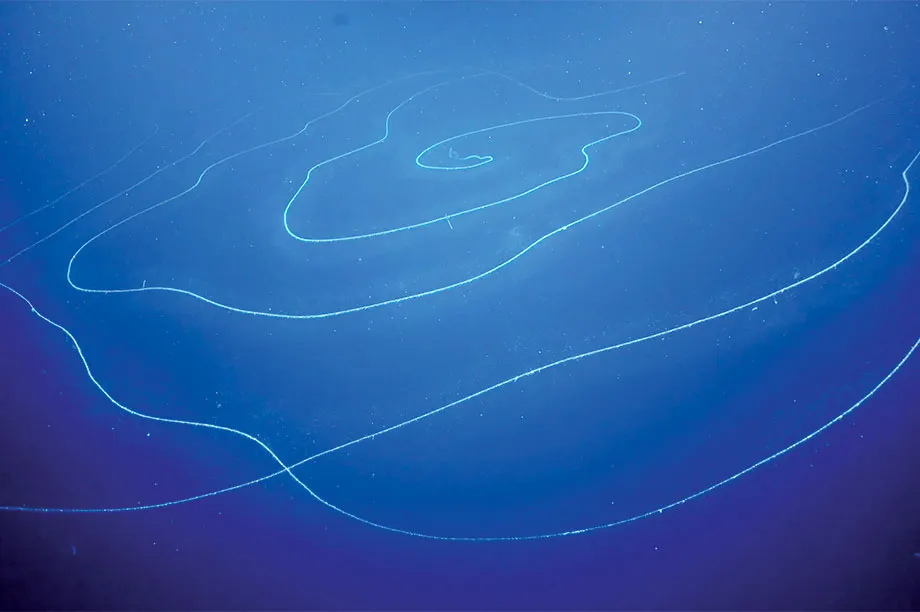
Meet the longest animal in the world, the siphonophore. Yes, it’s even longer than the blue whale. At 45m (150 feet), the blue whale with a maximum confirmed length of 29.9m (98 feet) is a mere baby in comparison. This specimen, seen here arranged in a feeding spiral, was encountered in 2020 as part of Schmidt Ocean Institute’s deep-sea expedition.
But be warned; it’s a relative of the Portuguese man o’ war, and is trailing deadly, stinging tentacles through the water. Think of it a bit like a wall of death, albeit a very different type to the Butlins ride with the same name.
Muntjac deer

Often referred to as the ‘barking deer’, the muntjac deer is a small, stocky mammal with fabulous glands. Native to parts of Southeast Asia but now common in the British countryside, these deer have adapted well to various habitats and are often found in woodland areas.
Their petite size, robust build and impressive jumping ability allow them to navigate dense vegetation, but it’s their inflating facial glands that have captured the attention of the public. These glands can open so wide, that they can actually turn inside out!
- Watch the viral video, and find out more about nature’s glandular wonder, the muntjac deer
Hoatzin
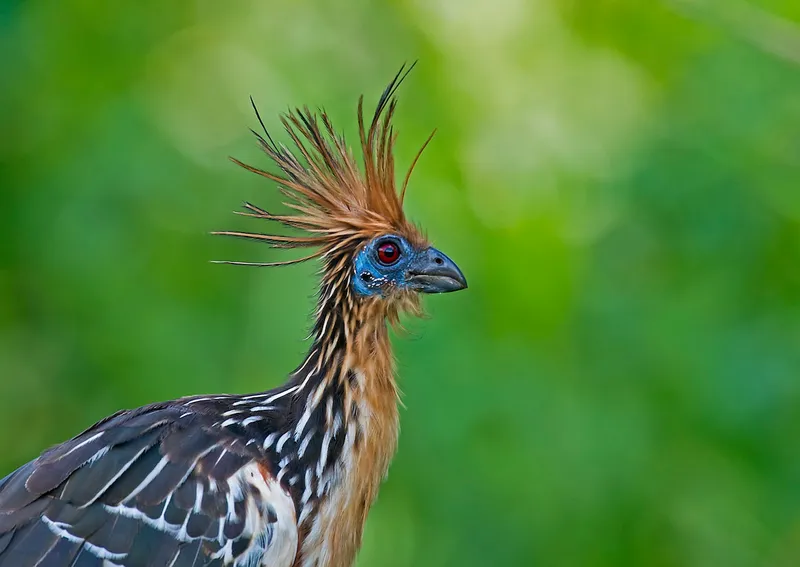
Surely the Hoatzin is one of the weirdest Amazonian birds. As babies, the chicks have claws on their wings which they use to climb trees. Adults ferment vegetation, much like a cow, albeit in a specialised crop. It gives them a manure-like odour, hence their nickname, the stinkbird.
Uakari
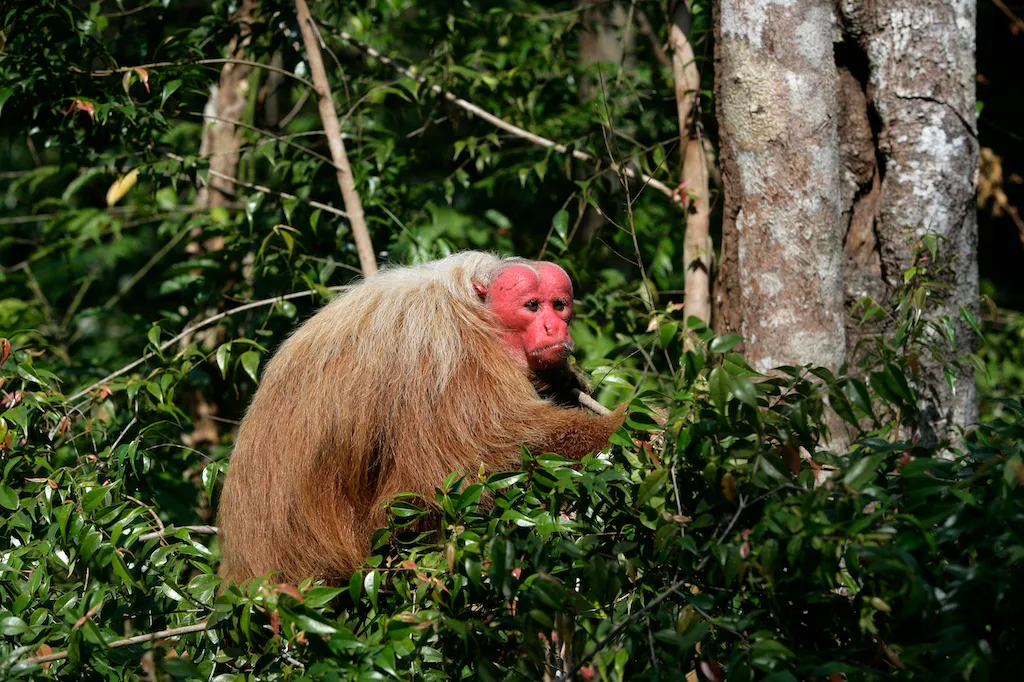
No, they haven’t been washing with beetroot, but the healthiest males do have the reddest faces. Females seem to know this, and choose their mates based on how red the male’s face is. Who says beauty isn’t skin deep?
Hagfish
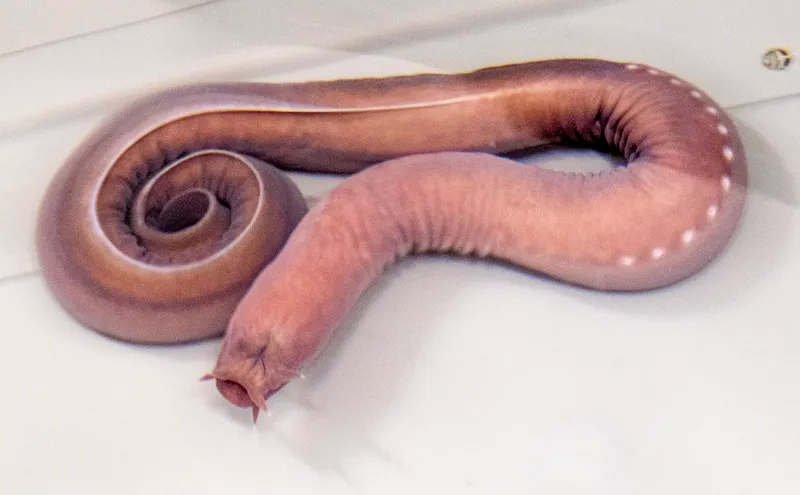
This awesome slime ball can spew out thick, sticky goo that will clog up the gills of any predator that dares dine on it. The hagfish is a type of agnathan, a jawless fish with an eel-like body. But if you’ve seen this slimy surprise doing the rounds on social media, you’ll know that it produces copious amounts of thick slime as a defence mechanism when threatened, allowing it to escape predators.
Hagfish are ancient – they evolved around 500 million years ago – so these slimy scavengers are clearly doing something right.
Here’s to survival of the slimiest!
- Read more about the really cool (but totally gross) world of slime
Jewel wasp

This bedazzling wasp will happily take on creatures much larger than itself; in the picture above it's eyeing up a cockroach (for this reason, it's also known as the emerald cockroach wasp). After injecting the brains of their prey with a stupefying venom, they bury it alive and lay their eggs in the grave with the now-zombie prey. The larvae will then feed on the creature until they are fully grown. Last of Us, eat your heart out. Literally.
Pink river dolphin
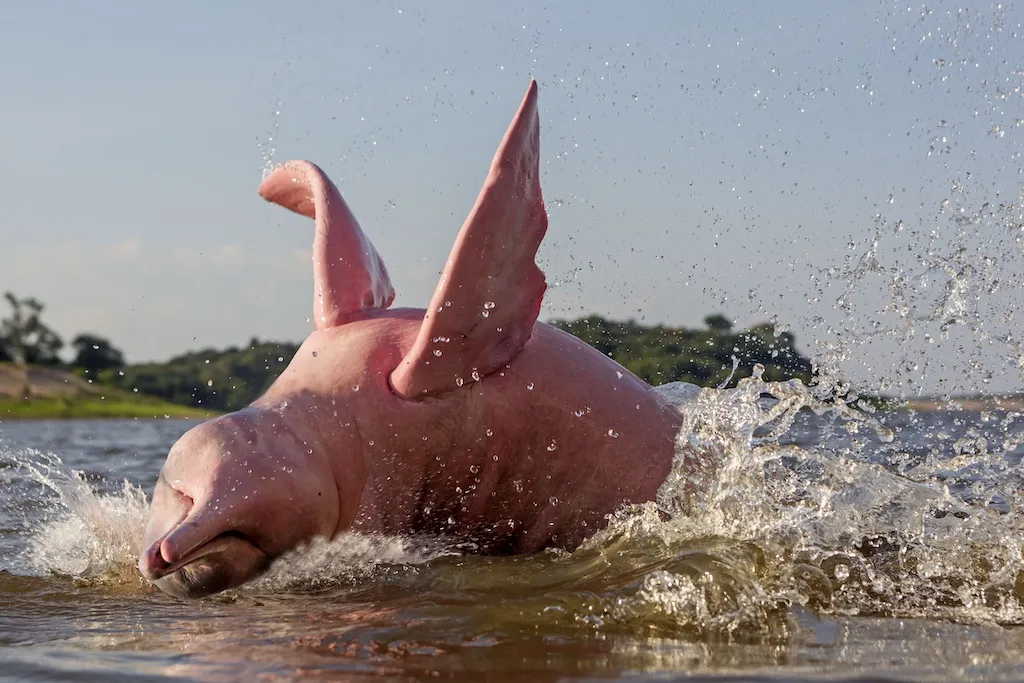
This freshwater cetacean is the largest species of river dolphin. They are born grey and acquire their pink colour with age. The final hue is influenced by many things, including behaviour, diet and how close their capillaries are to the skin.
- Read more about the most flamboyant member of the dolphin family, the Amazon pink river dolphin
Blobfish

Renowned for its gelatinous, droopy appearance, the blobfish has adapted to the extreme pressures of the deep ocean. Its peculiar visage has earned it the title of ‘world's ugliest animal’. Although that’s perhaps a little unfair given that name was derived thanks to its appearance outside of its natural habitat. But despite its seemingly unusual form, the blobfish is a fascinating example of how weird animals thrive in diverse and challenging environments.
Ghost shark

When this newly hatched baby ghost shark was found by scientists off the coast of New Zealand’s South Island, in February 2022, it quickly went viral for its bizarre looks. More formally known as chimaeras, these elusive creatures are rarely sighted and very little is known about them. Even less are known about their young, and they were only discovered for the first time in 2002.
These deep-sea denizens reside at depths of between 400 and 6,600 feet (122 – 2,011m) where water temperatures are near freezing. Their dead eyes and large wing-like fins, a characteristic better suited to flying, gives rise to their ghoulish name.
Despite the name, ghost sharks are not actually part of the shark family, rather they are a species of fish and have a skeleton made from cartilage, instead of bone. Having a low-density skeleton, like cartilage, is crucial for life at depth, as it won’t collapse under increased pressure. That said, they do lay egg capsules (also known as mermaid purses) on the seafloor - just like sharks do. The egg capsule protects the embryo as it develops, where they feed off a yolk, until they are ready to hatch.
“You can tell this ghost shark recently hatched because it has a full belly of egg yolk. It’s quite astonishing. Most deep-water ghost sharks are known adult specimens; neonates [newly born] are infrequently reported so we know very little about them,” says NIWA Fisheries Scientist Dr Brit Finucci, who was part of the team that made the discovery.
With a retractable penis-like appendage on its head, scientists are keen to learn more about these weird animals, and get a sense of population numbers, as so little is known about these elusive fish.
Penis snake
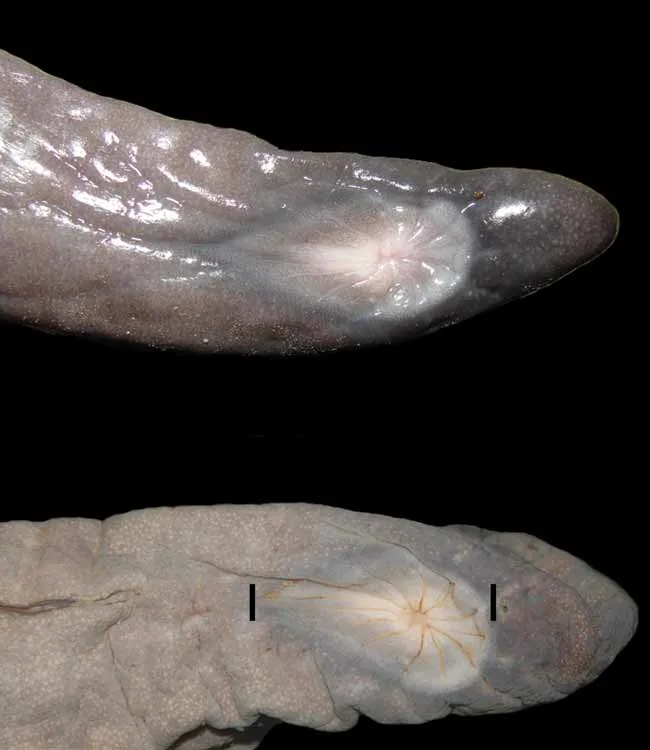
Despite the name, this phallic-looking creature is neither a snake... nor a penis. This weird animal is actually a type of caecilian: a limbless amphibian that bears more than a passing resemblance to a certain part of the male anatomy. So naturally, this creature also goes by names such as the ‘manaconda’ or ‘floppy snake’ – its Latin designation is Atretochoana eiselti.
Little is known about the species, and from its discovery in the late 1800s to its rediscovery in 2011 from the same region, there were only two preserved specimens. It’s the second-largest lungless tetrapod, breathing instead through its skin, and is the largest-known caecilian, growing up to 81cm in length. It is thought they can live between 5 to 10 years.
Unlike most caecilians, which are burrowers, most scientists agree that the penis snake is actually aquatic, like other lung-less tetrapods. It has poor eyesight – their eyes are barely visible under the skin – but has a keen sense of smell, which it uses to navigate. This combination is ideal, given they tend to live in Amazonian rivers where visibility is poor.
Sea pig

The sea pig, or Scotoplanes globose, is a species of sea cucumber named after its round body and pink colouring, and is certainly one of the weirdest animals. These bloated, water-filled sausages can grow up to 15cm in length, and are found in all of the world’s oceans. There’s a lot of them, too. When there’s a tasty meal to be had, for example, a whale corpse that has sunk to the seafloor, sea pigs will gather in their hundreds to take advantage of the feast, using a ring of feeding tentacles to shovel food into their mouths. Just like a real pig, they’ll eat almost anything.
Like the blobfish, these deep-sea vacuum cleaners have evolved for life at depth, specifically on the abyssal plain in the Atlantic, Pacific, and Indian Oceans. the weird animals pump water around their bodies to keep themselves inflated and bringing them too close to the surface causes them to shrivel up and die.
Sea pigs have a pretty effective defence, too; toxic chemicals in their skin deters predators from wanting to chow down on this forbidden sea bacon. But this doesn’t seem to bother another inhabitant of the seafloor, juvenile king crabs. In fact, they may use this toxic trait to their advantage. On the flat, muddy plains of the seafloor where it’s difficult to burrow and hide from predators, the baby king crabs hitch a ride on wondering sea pigs. Clinging to the sea pigs’ ‘belly’, the vulnerable baby king crabs are safe from predators, while they shed their shell to grow.
Pink fairy armadillo

The pink fairy armadillo is like a fuzzy caterpillar crossed with a lobster. It’s the smallest species of armadillo, and at around 13cm in length, it’s small enough to fit in your hand. Living in the sandy plains and dry scrublands of South America, it’s also known as the sand swimmer, thanks to its ability to quickly navigate the subterranean sands. Their unique pink colour comes from blood being pumped into their shell for thermoregulation, which helps them maintain a steady core temperature in the hot, arid climate.
- Read more about this weird animal, the pink fairy armadillo
Great potoo
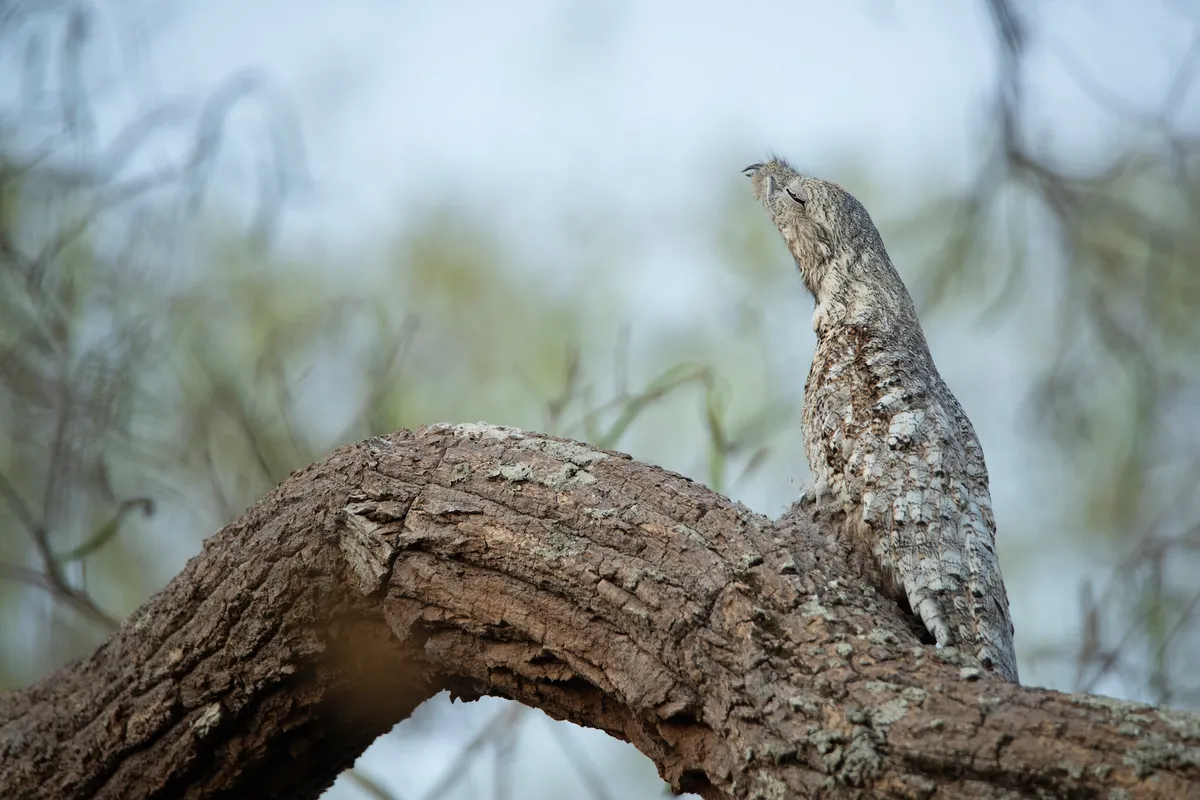
A master of camouflage, the great potoo is a carnivorous bird that lives mostly in tropical America. Remaining completely still, the great potoo blends in with its surroundings by mimicking a tree stump or branch as it patiently waits for unsuspecting prey. And, it doesn’t even give itself away by opening its eyes. Thanks to tiny openings below their eyelids, this nocturnal bird can see even when its eyes are closed, helping them spot even the most minute amount of movement.
- Read more about this weird animal, the great potoo
Echidnas
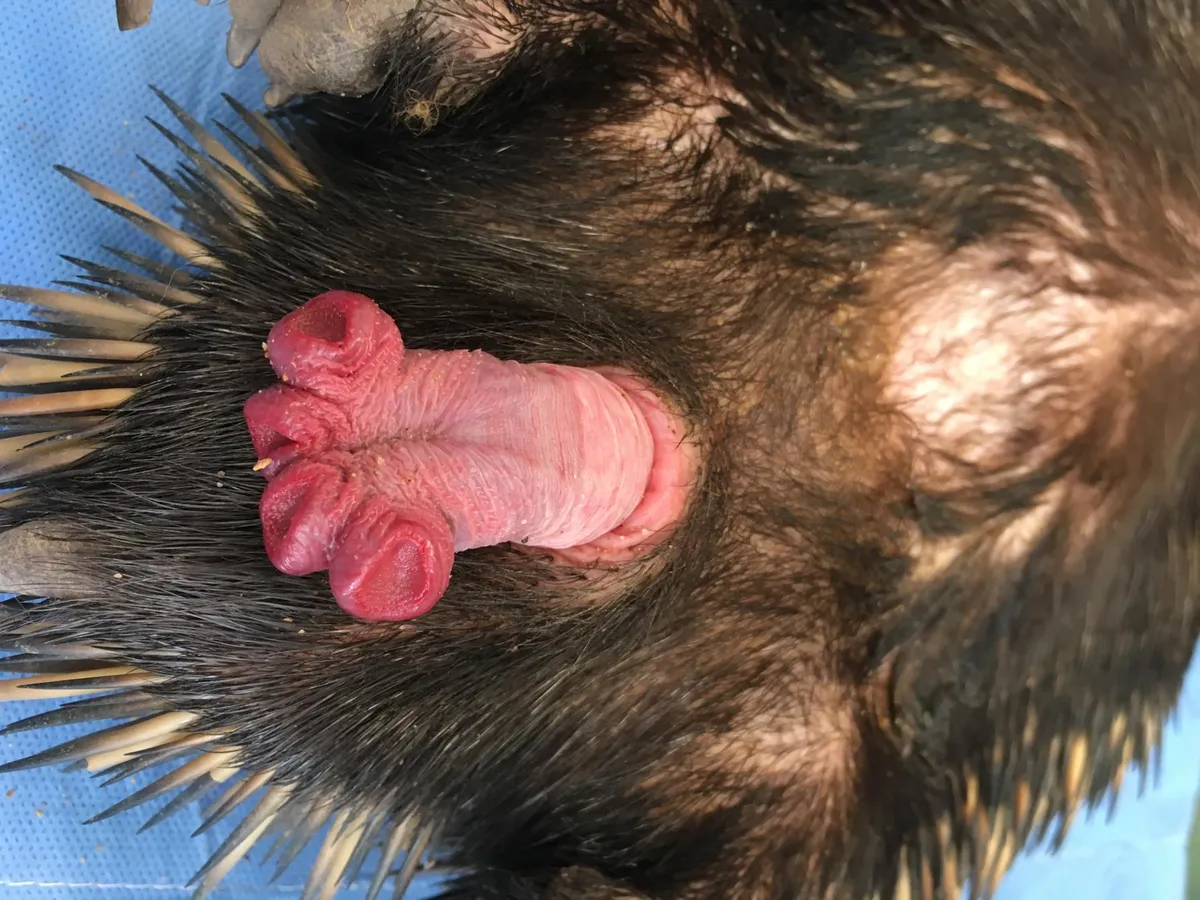
Which animal has the weirdest penis in the animal kingdom? Well, the echidna’s penis has four heads and looks like a foot. It’s also huge – measuring in at one third the length of the animal. Also known as the spiny anteater, the echidna is one of only two egg-laying mammal species alive today, the other being the platypus.
- Read more about this weird animal, the echidna
Star-nosed mole

Geologists of the animal kingdom, the star-nosed mole can detect seismic waves with 25,000 sensory receptors that make up the fleshy tentacles around its nose. As the only mole to live in swamps and marshes, this weird animal may also be able to detect faint electrical signals from aquatic prey. It can also smell underwater by blowing air bubbles and sucking them back into its nose, one of only two species that can do this (the other is the water shrew).
It also wins the prize for one of the fastest eaters in the world, taking less than a quarter of a second to slurp down a meal. Gulp!
- Read more about this weird animal, the star-nosed mole
Pacu
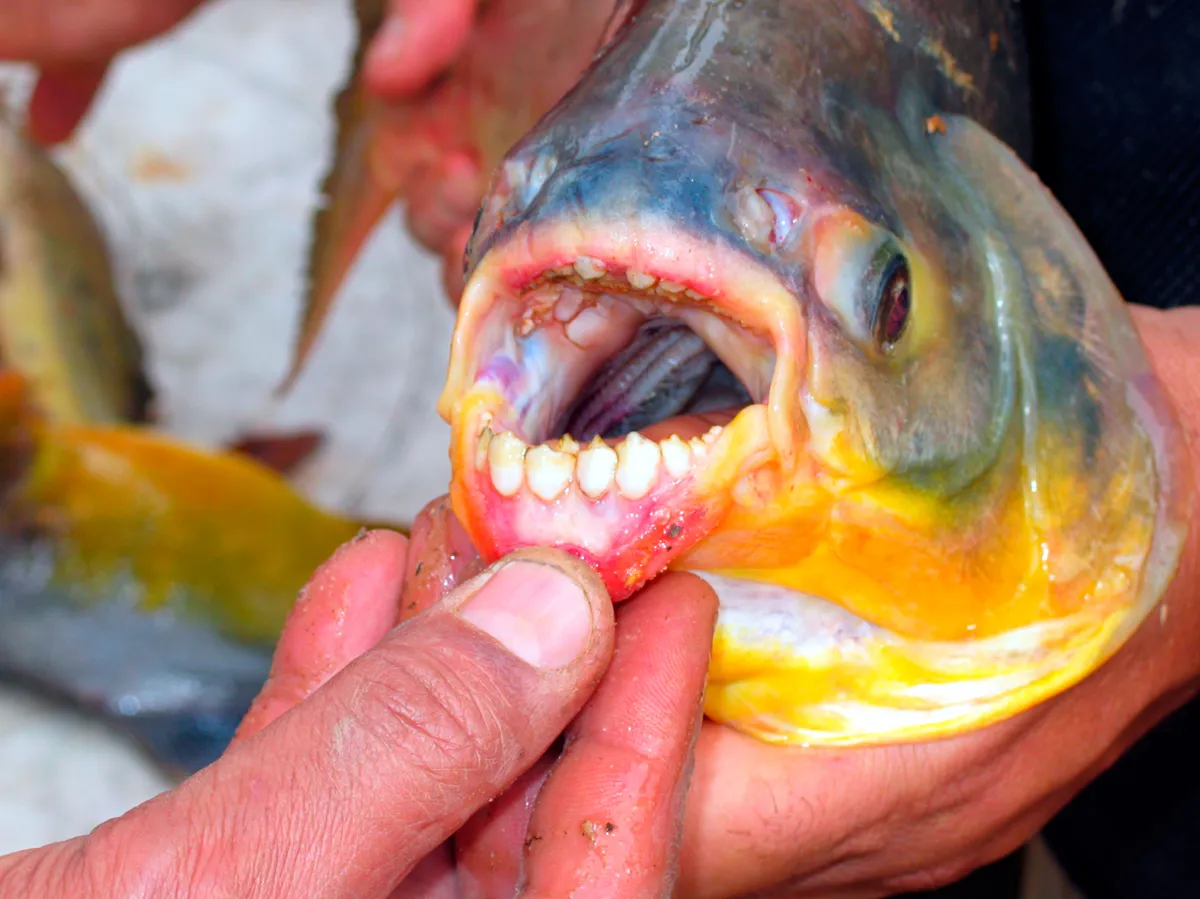
Have you ever seen a fish with human teeth? Often mistaken for a piranha, these weird animals are omnivores, eating both plants and meat. The pacu's square, straight teeth are used mainly to crush nuts and fruits that drop down into Amazonian rivers and streams from the trees above.
But swimmers, beware! These nut-crunching fish have also been rumoured to mistake human testicles for their favourite snacks, earning them the nickname ‘testicle-eating fish’ or ‘ball-cutter fish’. Ouch.
Tarsier
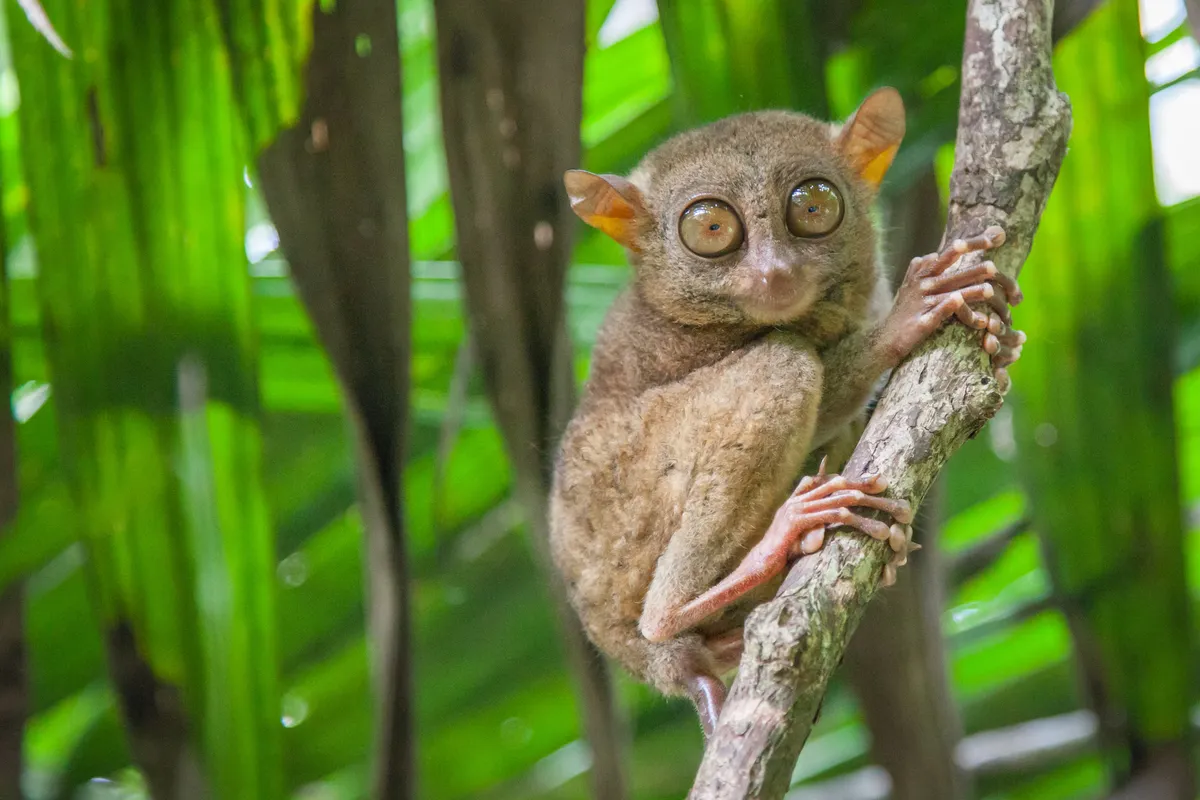
With each eye as big as its brain, the tarsier has the largest eyes in relation to the body size of any mammal. But with such huge eyes, they can’t move them like we can, instead swivelling their whole head 180° like an owl. This helps them silently look for prey, and they’re the only completely carnivorous primate – no plants at all.
And this strategy has proved successful, these weird animals are some of the oldest living primates on the planet, dating back at least 55 million years. This potentially dates them to the Paleocene-Eocene Thermal Maximum (PETM), a time when Earth experienced a sudden, and extreme warming, widely linked to the rise of mammals on Earth.
- Read more about this weird animal, the tarsier
Bird-dropping spider
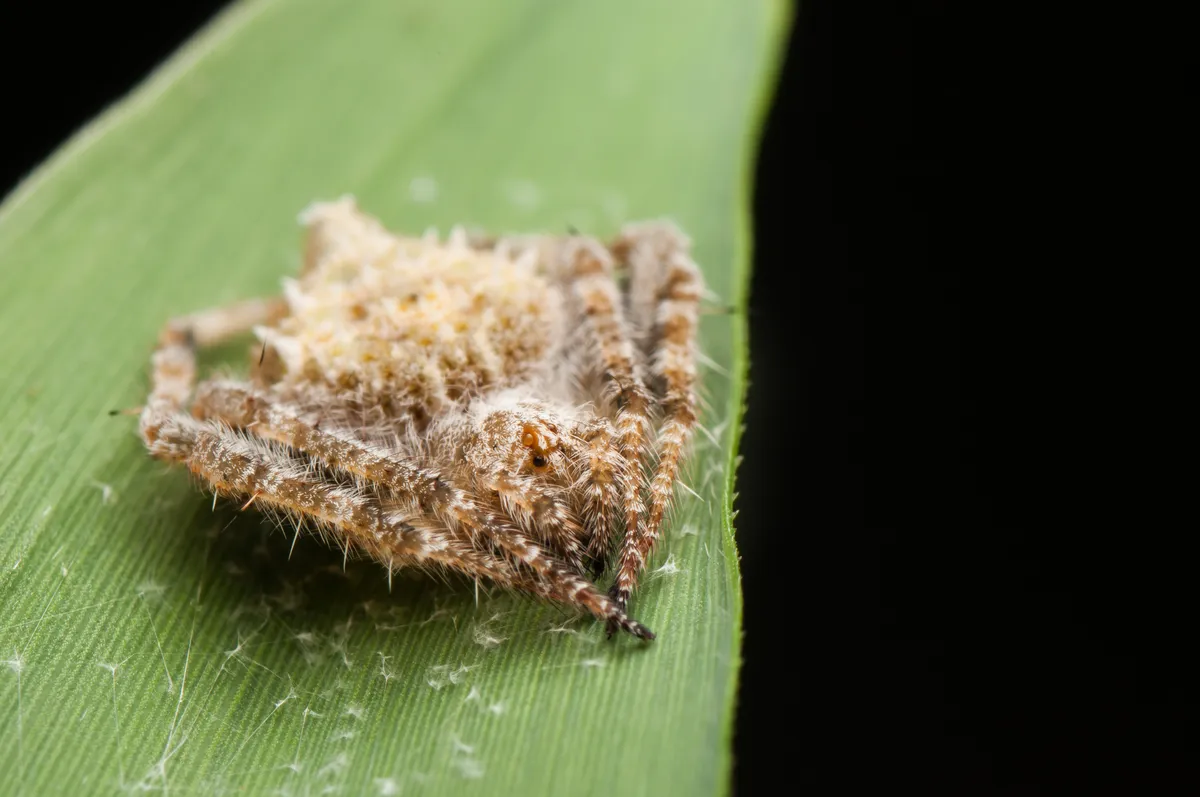
No, this isn’t a spider that drops birds, it’s a spider that looks like a bird dropping. Sitting huddled on a leaf during the day, the bird dropping spider uses mimicry to full advantage to fool would-be predators into thinking they’re a fresh pile of poop. But the deception doesn’t end there. At night, this crafty critter will stretch out its forelegs and release a pheromone that lures in unfortunate male moths looking for a mate. Thinking they might be getting lucky, the moth is instead grabbed, providing a tasty meal for this weird animal.
- Read more about this weird animal, the bird dropping spider
Thistledown velvet ant
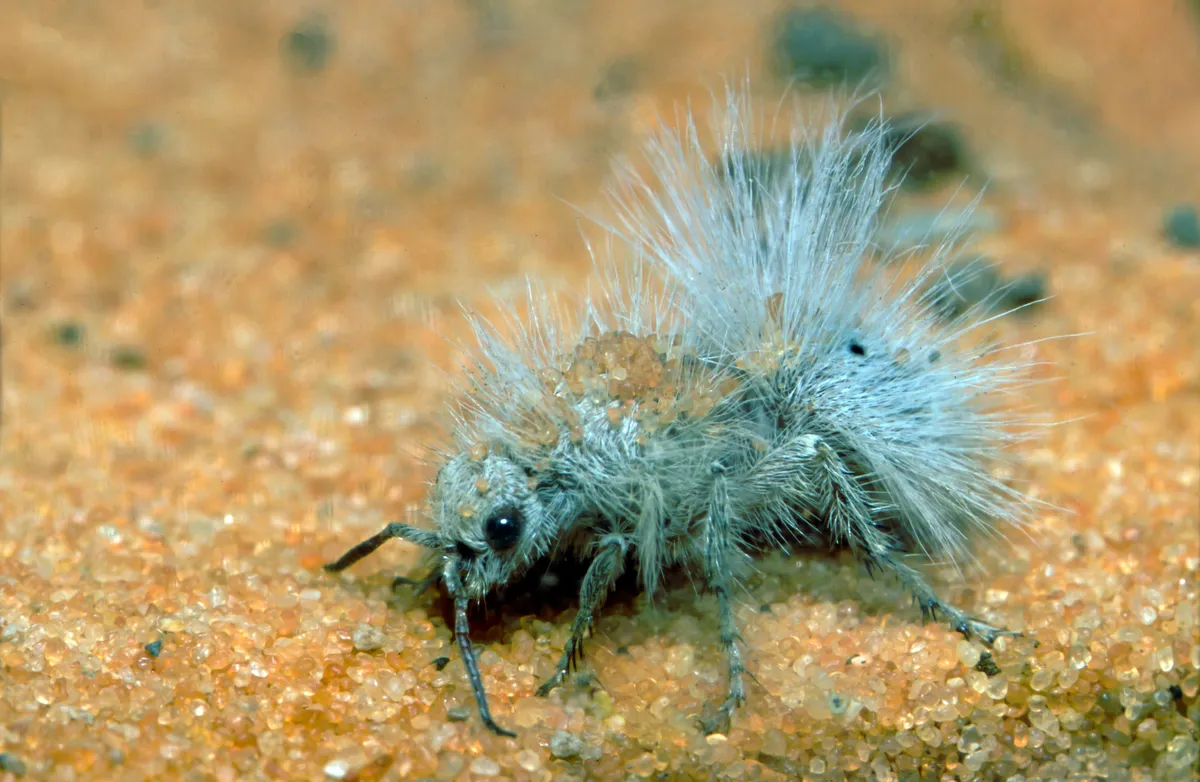
Despite the name, this fuzzy little creature is actually a type of wasp. Their flamboyant, fluffy exterior helps disguise these creatures as fallen creosote fruits, fooling would-be predators. Although some scientists have studied the fossil record, hypothesising that the white bristles evolved independently, as a way to reflect the intense desert heat.
- Read more about this weird animal, the thistledown velvet ant
Red-lipped batfish
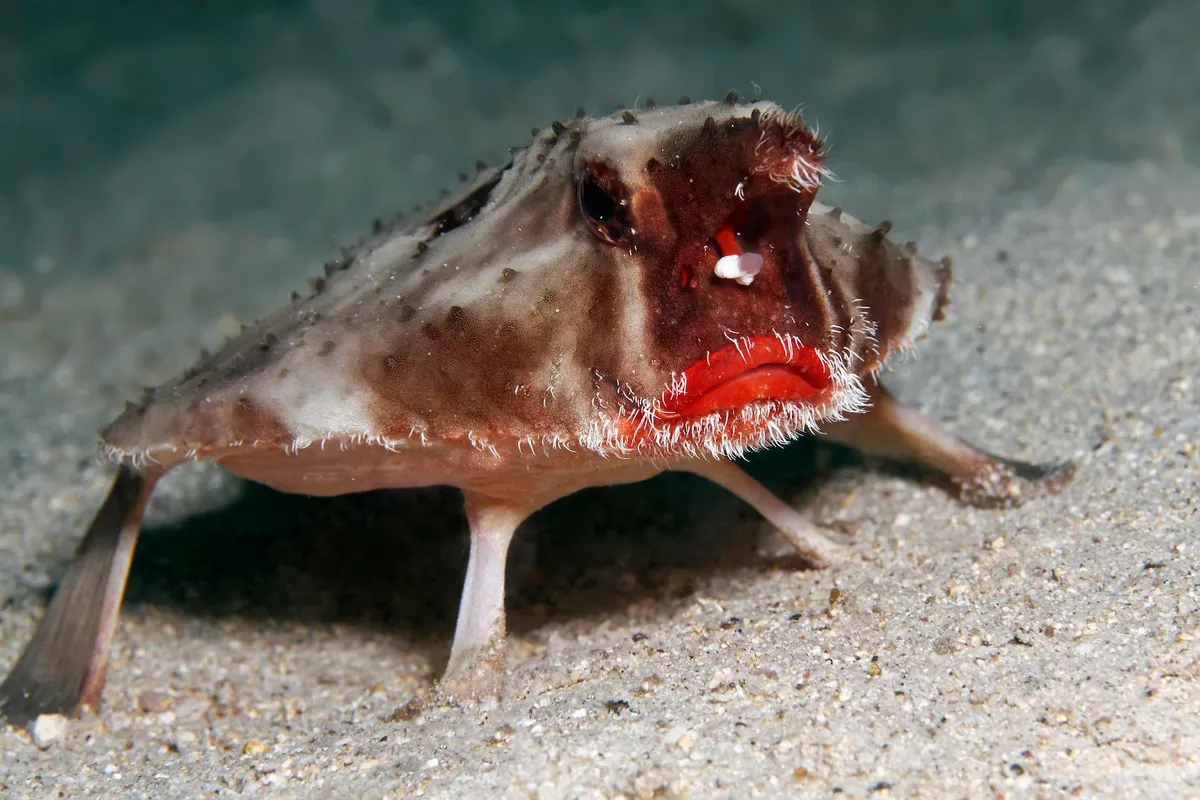
Pucker up! Endemic to the Galápagos Islands, the red-lipped batfish waddles along the seafloor using modified fins as legs, looking like it’s ready for a night on the town. Like many other weird animals, this adaptation may be for the males to attract a mate, although more research is needed.
- Read more about this weird animal, the red-lipped batfish
Pacific barreleye fish

Looking more like a marine submersible than a fish, the Pacific barreleye fish (also known as spook fish) has ultra-sensitive eyes that are, no surprises here, shaped like a barrel – tubular structures that are generally directed upwards. Looking upwards in this way, allows this weird animal to see through the top of its head to detect the silhouettes of overhead prey.
- Read more about this weird animal, the Pacific barreleye fish and other transparent animals.
Japanese spider crab
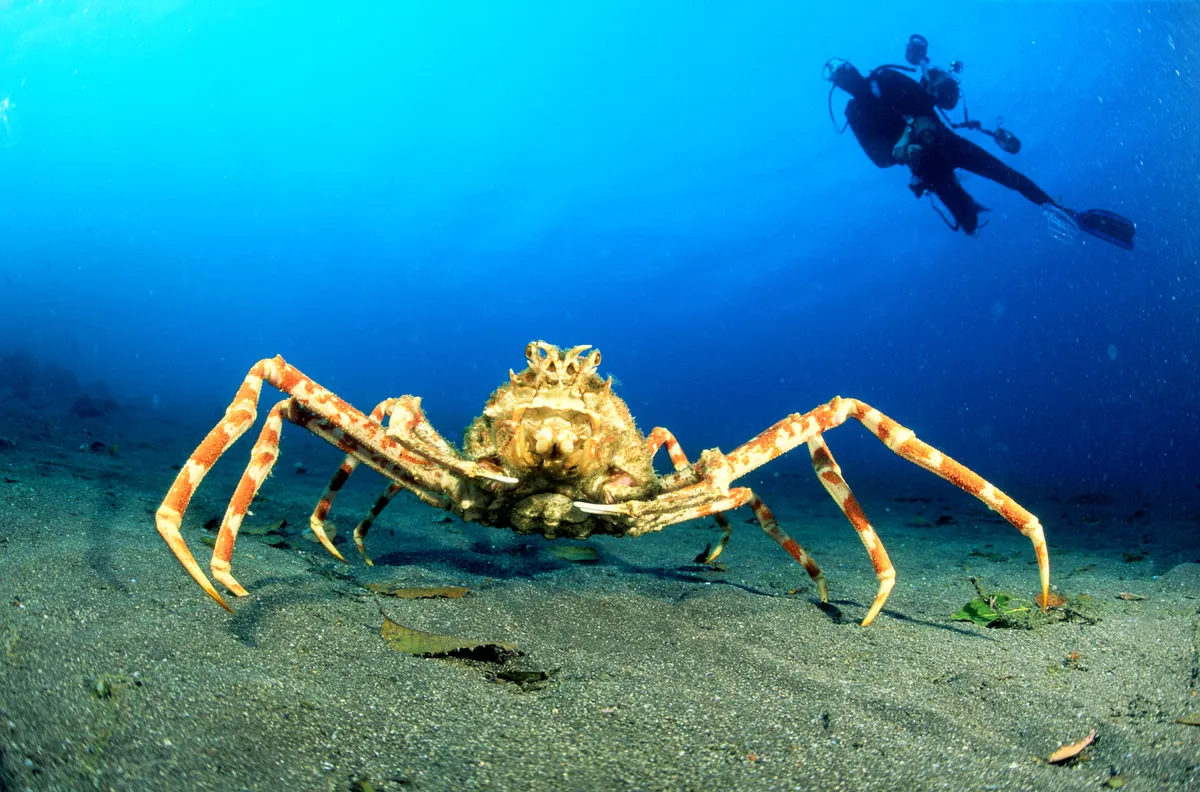
There are around 60,000 species of crustaceans, and of these, the Japanese Spider Crab is the largest. With a whopping 3.7m (12 feet) leg span, they are considerably larger than a human. But despite their large size, they start life as microscopic planktonic larva, one of millions that the mother lays. These weird animals are mostly found off the coast of Honshū, a Japanese island.
Mantis shrimp

These powerful little creatures have spring-loaded punches, allowing them to attack with the force of a .22 calibre bullet, reaching speeds of 23m per second. It’s the strongest known strike of any animal, with a force around 100 times that of its weight! If that’s not enough for you, these weird animals are even older than the dinosaurs.
- Read more about this weird animal, the mantis shrimp
Naked mole rat

The naked mole rat can live up to 32 years old, that’s the longest of any rodent. These remarkable rodents are also largely resistant to conditions that affect humans, from neurodegeneration to cancer, so these weird animals could offer valuable insights into our own biology.
- Read more about this weird animal, the naked mole rat
Sarcastic fringehead
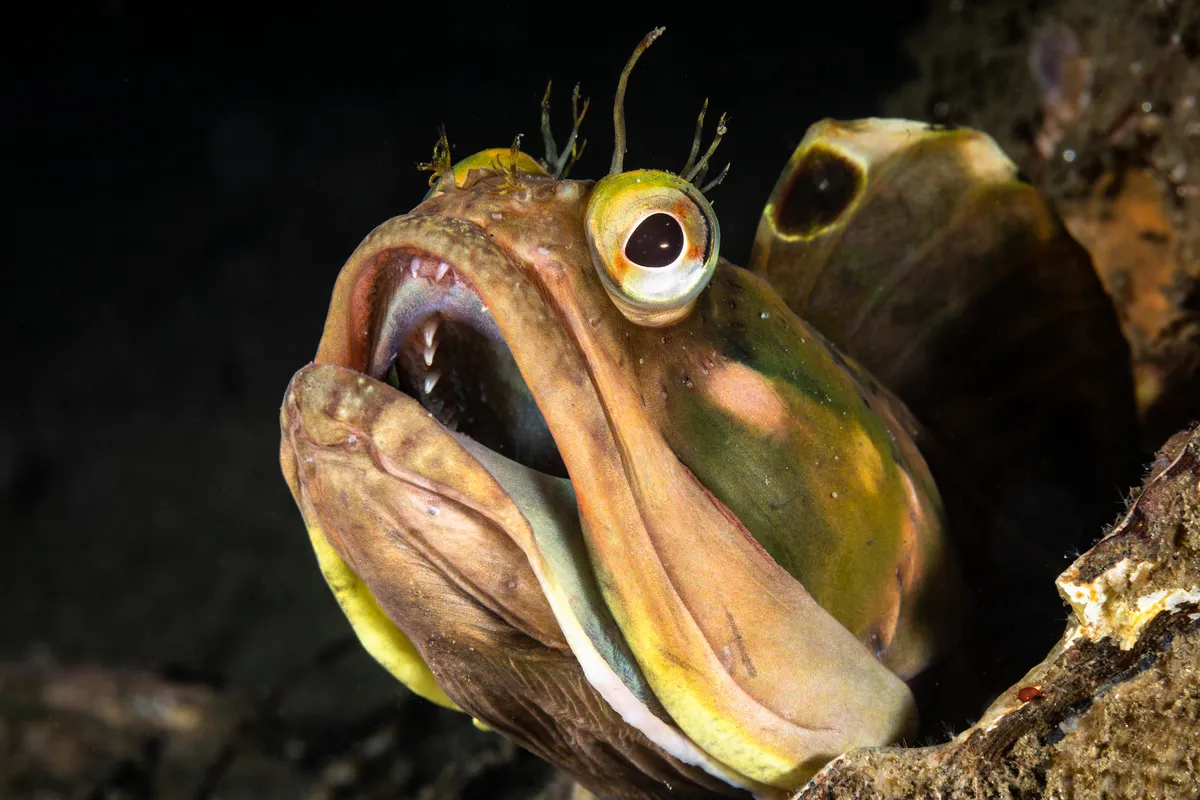
When this fish attacks, it looks like the Demogorgan from Stranger Things. With its enormous head, the sarcastic fringehead flares open its mouth, aggressively kissing the other to defend its territory.
- Read more about this weird animal, the sarcastic fringehead
Discover more incredible animals: